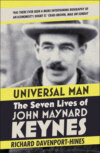Read the book: «An English Affair: Sex, Class and Power in the Age of Profumo»
RICHARD DAVENPORT-HINES
An English Affair
Sex, Class and Power in the
Age of Profumo

Dedication
For Jenny, Christopher and Hugo, and never forgetting Cosmo
Epigraph
Though most English men and women cannot ‘let themselves go’, they love to think and read about people who do throw off inhibitions, either with sex or violence – provided they are punished.
Geoffrey Gorer, ‘This is the English’, The People, 30 September 1951
Snobbery – of all kinds – and prurience are the two most obvious vices of this country.
‘Anatomy of Hysteria’, Spectator, 15 November 1957
One thinks immediately of all the dreary little snobberies, the triviality, the emptiness, the susceptibility to stupid vogues. How drab and provincial we have become! How enslaved to gimmicks! English inventiveness and energy, which used to be an example to the world – have they dried up altogether, or is it simply a bad period we are going through? The two great inventions of the English, their political system and their literature, both seem at the moment rather dwindled and shabby. The parliamentary two-party system has become, whether temporarily or forever, a mere contest between public relation outfits, with professional ad men in the back room.
John Wain, ‘The Month’, Twentieth Century, July 1959
CONTENTS
Title Page
Dedication
Epigraph
Overture
PART ONE: CAST
Chapter 1 Prime Minister
Chapter 2 War Minister
Chapter 3 Lord
Chapter 4 Doctor
Chapter 5 Good-Time Girls
Chapter 6 Landlords
Chapter 7 Hacks
Chapter 8 Spies
PART TWO: DRAMA
Chapter 9 Acting Up
Chapter 10 Show Trials
Chapter 11 Safety Curtain
Picture Section
Footnotes
Notes
Index
Acknowledgements
Also by Richard Davenport-Hines
Copyright
About the Publisher
Overture
In May of 1963, when I was nine, Miss Vera Groom, the old spinster who taught me English, asked her class to name a noun beginning with a vowel. There was a new word that I was proud of knowing. I had discovered it from the cook’s Daily Express. I raised my hand, and in response to a nod from her cried out ‘Orgy!’ Miss Groom trembled: she gripped the edge of her desk; her face flushed with blood; her skin turned puce. ‘You are a foul boy,’ she said, and sent me to be caned by the headmaster.
A few days later Mr Wilcox addressed the school. It was the year Dr No sold 437,000 copies in paperback. Warner Wilcox was then in his early forties, but seemed old to me. Like many headmasters of his time, he was both overbearing and anxious. Dark-browed, stern, conscientious, he had a jolly wife who could not soothe his pent-up tension. When he rebuked his school, he would spring up and down on his heels, as if he was going to bound forward into the boys and start cuffing them. ‘It has come to my attention,’ he said in a storm of tense heel-jerks, ‘that boys are bringing James Bond novels into school. I will not have them on the premises. They are sad-is-tic novels’ – he pronounced each syllable of sadistic lingeringly before ending his speech with a savage roar – ‘and I will thrash any boy who is found in possession of one.’ As soon as I could, I asked a chauffeur what ‘sadistic’ meant. If he knew, he did not say.
Then in June came prize-giving – ten days after John Profumo’s resignation as War Minister, I estimate, and two days before the momentous House of Commons debate on that resignation. The prizes were distributed, and a rousing speech was made by a friend of Wilcox called Renée Soskin. Mrs Soskin was a mother of six. She ran both a farm in Bedfordshire and an import-export business, which she had inherited when her husband died during his morning press-ups a year earlier. Her sister was political editor of the Observer, the Sunday newspaper for progressives, and Mrs Soskin, a humane, plucky, helpful woman, was Liberal parliamentary candidate at the 1964 general election for that most high-minded London suburb, Hampstead. She had, indeed, appeared on television promoting Liberal policies for the family, in a party political broadcast for the 1959 general election. A Conservative columnist had called her ‘a most intelligent and remarkable lady almost capable of converting me to Liberalism’.1
From the prize-giving podium Renée Soskin praised Mr Wilcox, Mr Potts, Mr Lorimer-Thomas (little did she know about Mr Lorimer-Thomas) while I daydreamed. Then she began to praise fee-paying schools, and I was jolted to attention. ‘Private schools are more indispensable than ever,’ she thundered at the climax of her peroration, ‘at this time of Deplorable Breakdown of Public Morals.’ The phrase rattled round the hall: ‘Deplorable Breakdown of Public Morals’. The adults rustled and glanced at one another. I sensed from the sumptuous indignation in nice Mrs Soskin’s voice, and all the silly looks that the adults were exchanging, that ‘Public Morals’ meant pompous hypocrisy, and that I wanted their breakdown.
I suspect that on that June afternoon it became inevitable that I would write one day about the sexual oppression, guilt and bullying, the whitewashing and blackballing, the lack of irony and absurd confused anger of ‘Jack’ Profumo’s England. The London half-world of Mandy Rice-Davies and Christine Keeler, or rather of their protectors, was the world in which I grew up. My grandparents lived in Bryanston Square, two minutes’ walk from Marble Arch. My mother lived in Montagu Mews West, which lay between Bryanston Square and Montagu Square. On the other side of Bryanston Square lay Bryanston Mews West. It was in a flat there, occupied by the slum landlord Perec Rachman, that the two-way mirror was installed through which steamy voyeurs – perhaps including the osteopath Stephen Ward – watched couples performing on a bed. Ward, the scapegoat of the Profumo Affair, spent the night before his show trial opened at the Old Bailey in a friend’s flat in Montagu Square: tabloid newspapers blared that he slept in blue silk pyjamas with a pink curtain in a gilt frame behind the bed. This, indeed, was soft living. Another block to the south-east was Portman Square, where Paul Raymond of Raymond’s Revuebar bought the penthouse which he shared with the glamour model Fiona Richmond. Ringo Starr, whom Raymond employed as his interior decorator, rewarded him with a panoply of James Bond gadgets and parvenu glitziness.
At the time of her temporary disappearance in March 1963, Christine Keeler lived at Flat 164, Park West, Edgware Road, three minutes’ walk from Bryanston Mews West, and a minute further from Montagu Mews West. For a time my father kept a leggy brunette in a flat in Park West. He took me there once in 1963, bounding up to the front door, which he opened with a flourish of his key chain. I asked him why he had a key to the woman’s flat. ‘I have a key,’ he replied with immense satisfaction, ‘that opens every door in London.’ He meant money. The Edgware Road flat was my induction into sexual deception, duplicitous lives and double standards. I have been standing on tiptoes, trying to peer into secret compartments, ever since.
The irritability of London motoring is a misery that I remember too well. My father bought his first car before driving tests had been devised. His school of motoring was Toad of Toad Hall’s. His spiritual home was the fast lane: he never felt more himself than when he was behind a steering wheel with his foot hard on the accelerator. As a Christmas treat for 1959, just after the M1 motorway had opened, he took me for a quick run north from Watford, which I believe may have turned into a dashing ‘fun-drive’ all the way to Rugby and back. Certainly I recall him saying on the interminable return journey that he would write to the Minister of Transport to complain that trees had been left standing beside the motorway, and might cast dangerous shadows by moonlight. He liked high-velocity travel to lay waste to the landscape.
The speed limit of seventy miles per hour was introduced as a temporary measure in 1965 to cope with enthusiasts like my father. Every few months he would take me to Jack Barclay’s car showroom in Berkeley Square. The salesmen were thin men with thin moustaches, sharp suits and sharper eyes. They stood apart from one another, idling by the polished bonnets and winged mascots, but were swift and implacable as they headed for their prey when a customer stepped inside the plate-glass windows: lone sharks, one might say. Sometimes my father drove a Bentley, sometimes a black Alvis. One thing all his cars had in common was no wing-mirrors. Wing-mirrors, my father often told me, spoilt the line of a car. They were effeminate. A good driver, a real man, did not need to look behind him. This creed led to several accidents, many altercations and, for me, one Copernican moment of political revelation.
On a Saturday during the summer after Miss Groom sent me to be beaten, and Mr Wilcox denounced the sadism of James Bond, and Mrs Soskin deplored the breakdown of Public Morals, my father sped me to Park Lane. It was August 1964, and we were in a black Alvis with the hood down. A year earlier workmen had finished converting the sedate old carriage road of Park Lane into a dual carriageway with four lanes on both sides. Old avenues of trees were felled, the eastern meadows of Hyde Park put under macadamised tar, and concrete burrows were excavated so that Mayfair businessmen could park their Jaguars in strip-lit subterranean hideaways. Thinking of Hollywood rather than Paris, Whitehall officials had wanted to foist the name of Park Lane Boulevard as a cosmetic to cover the scars of their vandalism. My father loved the swift new Park Lane as a reminder that England was finished with slowcoaches.
There were other signs of change. Sir Philip Sassoon’s great house overlooking the park had lately been torn down, and replaced by a monstrosity that housed the Playboy Club. The developer of the site, Jack Cotton, who lived on Park Lane himself, had, in a show of braggadocio, paid Walter Gropius, the Bauhaus architect, to advise on the redevelopment. Gropius’s inspiration, with which London was learning to live, was to assert the unyielding modernity of the new building by cladding it in concrete rather than the original plan of Portland stone.
We stopped at the Hilton hotel. Its thirty storeys and jutting gimcrack modernity had been opposed at planning stage by ‘stick-in-the-muds’ whom my father had rejoiced to see quashed. The hotel towered over the rest of Park Lane, and could be seen in its unwieldy disproportions from the far end of Kensington Gardens. It was the first building in London to overlook the gardens of Buckingham Palace, and this objection, too, had been quelled to my father’s pleasure. (Thirty years later I was to read the minutes of the Cabinet meeting at which Harold Macmillan’s government endorsed this encroachment on the Queen’s privacy: the justification given was that American holiday-trippers staying in the Hilton would bring badly needed dollars to revitalise the ailing English economy.) The site had belonged until 1956 to an old banking family, the Abel-Smiths, who had a mortgage on it. This was a period when debt frightened most people as a weir would scare steady ferrymen, but spurred a bold minority rather as the wide oceans excited fearless privateers. The Abel-Smiths had therefore sold their plot for £550,000 to a property developer called Charles Clore, who bedded Keeler, as it happens. Clore, who borrowed heavily, spent another £5 million turning the site into the Hilton. In the hotel my father and I went to the American coffee shop: he gulped scalding black coffee while I spooned my way through a banana split or knickerbocker glory. I cannot imagine why we were there: perhaps a rival for the brunette was in the offing.
Afterwards, back on wheels, the Hilton behind us, my father stopped his car outside a large, abandoned house of dilapidated stucco on the corner of Hertford Street and Old Park Lane. It was awaiting demolition, he explained. Londonderry House, he added, had belonged to a proud, stupid family who had been friends of Hitler, but the last lord had been a helpless drunk who had died young. Now their day was done, the old house where prime ministers once dawdled on the marble stairs had been sold and was to be torn down. Londonderry House would be smashed for good. It represented a world that impeded progress. My father told me that another hotel for Americans was planned for this site next to the Hilton. It was glorious what competition was going to do. It was marvellous what future prosperity was promised to those who were quick to snatch their chances.
Then my father swung the car round into a full U-turn to head back to Park Lane: no unmanly glances back over the shoulder, no effeminate wing-mirrors to look in, just my father’s iron resolve as he pulled out. There followed an almighty screech of brakes, a squeal of tyres, and the sound of a horn held down hard. A black taxi cab behind us had made an emergency halt. As we completed the U-turn and passed the stationary taxi, my father stopped, looked at its driver and gave a harsh, defiant laugh: he was proud of having a chuckle that made people lose their temper or, if they were already angry, re-double their rage. The taxi driver was furious, temporarily powerless, but not, he reminded us, permanently disempowered. As my father drove off chortling, his victim shouted after him the deadly threat: ‘Wait until October!’
Everyone knew there was going to be a general election in October. ‘A Labour voter,’ my father said witheringly. He probably forgot the incident in a trice, but I never did. October came, Sir Alec Douglas-Home was displaced as Prime Minister by Harold Wilson, and I acquired the private incantation: ‘Wait until October’. For years, I would repeat the phrase to remind myself that however insecure life already seemed, there was greater instability to come. Waiting for October became the title of the self-pitying memoirs that I secretly wrote at the age of fifteen.
This book is not Waiting for October in another guise, although it is about insolence, envy and the politics of revenge. Rather, it is a history of the mentalities that made Miss Groom, Mr Wilcox, Mrs Soskin and the Edgware Road brunette. It is a study of milieux: the worlds of Harold Macmillan, Jack Profumo, Lord Astor, Stephen Ward. ‘How separate we keep ourselves in Britain,’ the Labour politician Richard Crossman reflected of the 1960s. ‘There is the legal world, the doctors’ world, the artistic world, the dramatic world, the political world. We are tremendously separate.’2 The spheres of politics, medicine, law, journalism, smart society, new money, and espionage – each a discrete segment of British society – all converged into the Profumo Affair of 1963 and detonated a shattering blast. This is a London book, which depicts the capital’s good-time girls, property dealers and Fleet Street hacks, and the ways they pointed the rest of the nation. It is about the millionaire with his new Alvis who resented the old order, thought his time had come, and longed to see the demolition ball hit Londonderry House, as well as the taxi driver who hated the millionaire, and thought his time was coming in the October election. It describes the worlds they made, and how none of them got what they wanted.
PART ONE
ONE
Prime Minister
‘I have news today that will bring a gasp from every Tory in Britain,’ reported Crossbencher, the political columnist of the Sunday Express, on 2 December 1956.
Mr Harold Macmillan is planning to retire from the Commons.
What a turnabout this is. Only the other day all the talk was of his rivalry with Mr Richard Austen Butler. He was alight with ambition, his Edwardian moustache bristling for the fray. It is true, of course, that he has lately been dropping a few little hints. In the Commons he talks of looking forward ‘to retirement from many of these troubles’. To the Tory 1922 Committee he says he is thinking ‘of the viscounty that is my right’. But these are laughed off by most people as typical Macmillan flourishes.
I report that Macmillan means exactly what he says. He intends to go. The reason? Not because of any personal clashes with his colleagues. Not because of any disagreement on policy. But he is sixty-three in February, three years older than [the Prime Minister] Sir Anthony Eden, nine years older than Mr Butler. And suddenly, with absolute clarity, he sees that the nation’s highest office is forever beyond his grasp. How sad a moment for a politician who has come so far. The moment when he realises that he is finally out of the race.
The only remaining question: When will Mr Macmillan claim his coronet?
One can imagine the poignant sorrow, the air of noble resolve, affected by Macmillan as he confided in the Sunday Express man. A few days later, Brendan Bracken, chairman of the Financial Times, reported a similar tale to the Express proprietor Lord Beaverbrook, but with a hard-headed gloss. ‘Macmillan is telling journalists that he intends to retire from politics and go into the morgue. He declares that he will never serve under Butler. His real intentions are to push his boss out of Number Ten.’ A month later, on 10 January 1957, after seductive courting of the parliamentary party, Macmillan became Prime Minister.1
Only a consummate politician would brief that he is on the brink of retirement as a device to reach the highest office. Macmillan had foreseen, since November, when he had a privileged talk with Eden’s physician, Sir Horace Evans, that failing health would force the Prime Minister’s retirement. He knew, too, that many Tories felt, in the backbencher Robert Boothby’s words, ‘contemptuous disdain’ for Rab Butler as a boneless appeaser, and would not have him as Eden’s successor at any cost. His ruthless clarity and oblique tactics were outstanding.2
Lloyd George was the predecessor whom Macmillan most admired, the arch-spiv among Prime Ministers – shameless, improvising, compassionate, devious, inspired. Macmillan was a politician who mastered both appearances and realities, and understood the differences between the two. He was simultaneously a romantic escapist and sturdy materialist. He studied men’s wiles, and knew their weaknesses. He was a world-weary cynic about human vanity yet could be as shocked as a boy scout by the grubbiness of people’s motives. Outward calm masked high-strung agitation. He looked like a grandee, had the manners of an Edwardian man-about-town and was one of the last men in England who still put his tongue in his cheek when making a sardonic quip. His self-protective staginess, his toying with appearances, his patrician pose of authoritative nonchalance – all so artfully embedded in the past – were a source of strength and renewal when he was Prime Minister approaching the general election of 1959, but would prove a source of increasing weakness in the years before his resignation in 1963.
Macmillan had been born in 1894 in a tall, thin house in Cadogan Place, where Knightsbridge borders Belgravia. In his parents’ home solid comforts were joined with a dread of worldly show and admiration for spartan discipline. Maurice Macmillan, his father, was a partner in the publishing house of Macmillan, an outstanding example of Victorian self-help and constructive idealism, for it had been started by Maurice’s father and uncle, themselves the sons of a crofter, a poor tenant farmer, on the Scottish Isle of Arran. Macmillan’s mother was a physician’s daughter from Indiana, which made him the only Prime Minister (apart from Churchill) to have an American mother. She proved morbidly possessive, withdrawing him from Eton when he was fifteen and sacking his tutor when he was sixteen. His education was further disrupted, for he was an early volunteer in the First World War, which began when he had been only twenty months an undergraduate at Oxford.
Macmillan’s war experiences, which proved his courage but shredded his nerves, are of supreme importance in understanding him. Overall he was wounded five times, and bore his scars and disabilities for seventy years. At first, on the Western Front, he was a bomb officer with the Grenadier Guards, training men to throw grenades, and pacifying himself with the novels of Dickens and Scott. In the first battle in which he fought, Loos in 1915, he was shot in the hand and also suffered a head injury. In 1916 he was wounded during a reconnaissance mission to German lines. ‘The stench from the dead bodies that lie in heaps around is awful,’ he wrote to his mother after the Battle of the Somme. ‘We do all the burying that we possibly can.’ Once, leading an advance platoon down a moonlit lane near the devastated village of Beaumont-Hamel, he passed a dead German with an outstretched arm rigid in death: his orderly went up and shook it. A few days later, near Delville Wood, he was hit in the knee by shrapnel and in the pelvis by machine-gun bullets. A water bottle in his tunic deflected a bullet from hitting his heart. He rolled into a shell hole in no-man’s land, where he lay for twelve hours, feigning death when Germans approached, dosing himself with morphine, and scanning a copy of Aeschylus which he had secreted in his battledress, until a rescue party found him. He nearly died of his wounds, endured several operations and years of gruelling pain. ‘The act of death in battle is noble,’ he had written to his mother a few days earlier, ‘but the physical symptoms and actual appearances of death are, in these terrible circumstances, revolting.’ He learnt, as no one should have to learn, to tell how a man had died by the way their body lay. The war left him with sporadic pain, a shuffling gait, a limp handshake and spidery handwriting. It accentuated the apprehensions that had made him such a sad, morbid, unpopular boy at Eton: ‘the inside feeling that something awful and unknown was about to happen’ which still decoyed him as Prime Minister, and forced him to retreat from the world to spend weekends in bed.3
While recuperating from his wounds, Macmillan immersed himself in books to enrich an already well-stocked mind. He had been elected a King’s Scholar at Eton in 1906, and was the first K.S. to become Prime Minister since Walpole. He ranked with Asquith as the best-read twentieth-century Prime Minister. He had the longest uninterrupted hold on power of any premier between Asquith and Thatcher. His literary-mindedness intensified when he left the army to become a partner in the family publishing firm. He became responsible for such authors as Kipling, Hardy, Yeats, Hugh Walpole, and Sean O’Casey. Maynard Keynes, who had been the boyhood friend and perhaps lover of Harold’s elder brother Daniel, was a Macmillan author with strong influence on his economic ideas. There had not been so literary a Prime Minister since Disraeli, and his love of novels made him the most vivid and alluring of political leaders. He calmed his nerves by happily re-reading Austen, Trollope and Meredith; excited his imagination with Stendhal or Nevil Shute’s dystopic tale of radiation sickness after nuclear war; honed himself by reading Anthony Powell (‘witty but pointless’) as a preliminary training for Proust.4 His temperament – nervous, subtle and theatrical – was decisive to the colour, texture and shape of the modernisation crisis in British politics and society of 1957–64.
In 1924, Macmillan captured a difficult industrial constituency, Stockton-on-Tees, by unusual methods. He insisted that his local supporters contribute to election expenses, reorganised the local association along democratic lines, declined the help (or handicap) of speakers sent by the central party organisation in London, and left unopened the parcels of official propaganda. His distress at the unemployment and privation of north-east England made him a rebel against economic orthodoxies. In 1927 he and three other young MPs who were styled ‘Tory Democrats’ issued a milk-and-water Keynesian booklet entitled Industry and the State. ‘A Tory Democrat,’ sneered a socialist professor, ‘means you give blankets to the poor if they agree not to ask for eiderdowns.’ Nevertheless, Aldous Huxley found much sense in Macmillan’s 1931 publication Reconstruction: A Plea for National Unity, and told T. S. Eliot: ‘I’m glad the young conservatives are waking up.’5
Together with Sir Cuthbert Headlam, Macmillan formed the ‘Northern Group’ of Tory MPs lobbying on behalf of the region. ‘He is a curiously self-centred man, and strangely shy and prickly – and yet the more I see of him the more I like him,’ Headlam noted after a talk in 1934. Although Headlam advised him to continue pushing progressive ideas, but to stop speaking and voting against the government, Macmillan did not restrain his dissent. He affronted fellow Tories by telling a newspaper interviewer in 1936 that ‘a party dominated by second-class brewers and company promoters – a casino capitalism – is not likely to represent anyone but itself’. That year he was the only backbencher to resign the party whip when Baldwin’s government lifted sanctions which had been imposed on Mussolini’s Italy after the invasion of Abyssinia. Although he rejoined the party after Neville Chamberlain became Prime Minister in 1937, he risked de-selection as a Conservative candidate by continuing opposition to appeasement of dictators. In 1938 he wrote a Keynesian treatise entitled The Middle Way, which indicted Conservative economics as callous and complacent, and argued for more consensual, corporatist, expansionist economics. The London Stock Exchange, he suggested, should be replaced by a National Investment Board. This was not the rebellion of a showy, self-seeking mutineer, but the dissent of a man who obstinately, perseveringly, worked out new lines for himself.6
In 1940, when Churchill became Prime Minister, he chose Macmillan as Parliamentary Under Secretary at the Ministry of Supply. About a month after this humdrum appointment, Headlam sat beside Macmillan at the long table where members dine together at the Beefsteak Club. ‘He is very much the Minister nowadays, but says that he has arrived too late to rise very high,’ Headlam noted. ‘I can see no reason (except his own personality) for his not getting on – even to the top of the tree – but he is his own worst enemy: he is too self-centred, too obviously cleverer than the rest of us.’ Shortly after this Beefsteak evening, Macmillan was motoring in a car with his private secretary, John Wyndham. After desultory conversation, Macmillan fell into brooding silence. Then suddenly, with intense emphasis, but as if talking to himself, he exclaimed: ‘I know I can do it.’7
These glimpses of Macmillan at forty-six – delighted to have reached office, but equivocal about his prospects – are telling. He felt his aptitude for power, but sensed he must disguise his clever ambition. His confidences to Headlam, his exclamation before his most trusted aide Wyndham, prefigure him briefing journalists in 1956 that his political career was over as he poised himself to take supreme control.
At the end of 1942 Churchill offered the post of ‘Minister Resident at Allied Forces Headquarters in Algiers’ to Macmillan, his second-best candidate, whom he had recently described as ‘unstable’. Macmillan accepted without a moment’s havering. It proved to be a hard job, unrewarding in outward prestige, but he won praise from those who knew of his behind-the-scenes adroitness. With both the American and Free French representatives he was direct in his approach but insinuating in his ideas. During the closing phase of the war, Macmillan headed the Allied Control Commission in Italy, becoming, said Wyndham, ‘Britain’s Viceroy of the Mediterranean by stealth’.8
By the war’s close Macmillan had been married for a quarter of a century. He had met Lady Dorothy Cavendish when he was serving as aide-de-camp to her father, the Duke of Devonshire, who was then Governor-General of Canada. They married – she aged nineteen, he twenty-six – at St Margaret’s, Westminster in 1920. The bride’s side of the church was filled with hereditary grandees: Devonshires, Salisburys, Lansdownes; the groom’s with Macmillan authors, including Thomas Hardy, who signed as one of the witnesses. The young couple took a London house, at 14 Chester Square, on Pimlico’s frontier with Belgravia. After 1926 they also shared Birch Grove, a large house newly built in Sussex under the directions of his mother. The marriage deteriorated after 1926, as Dorothy Macmillan chafed under her mother-in-law’s meddling intimidation.
One of the Tory Democrats to whom Macmillan was closest in the 1920s was Robert Boothby, a dashing young MP with an unruly mop of black hair and bombastic style of speechifying. Dorothy Macmillan was attracted to him when they met during a shooting and golfing holiday in Scotland in 1928: during a second holiday after Macmillan’s defeat in the general election of 1929, she squeezed Boothby’s hands meaningfully while they were on the moors. Their affair was consummated during a house party with her Lansdowne cousins at Bowood. Photographs of the pair, taken at Gleneagles, show her as clear-skinned and strong-limbed, with prominent eyebrows and chin, a saucy grin, and the air of an undergraduate. Of the two lovers, Dorothy Macmillan had the dominant temperament.












